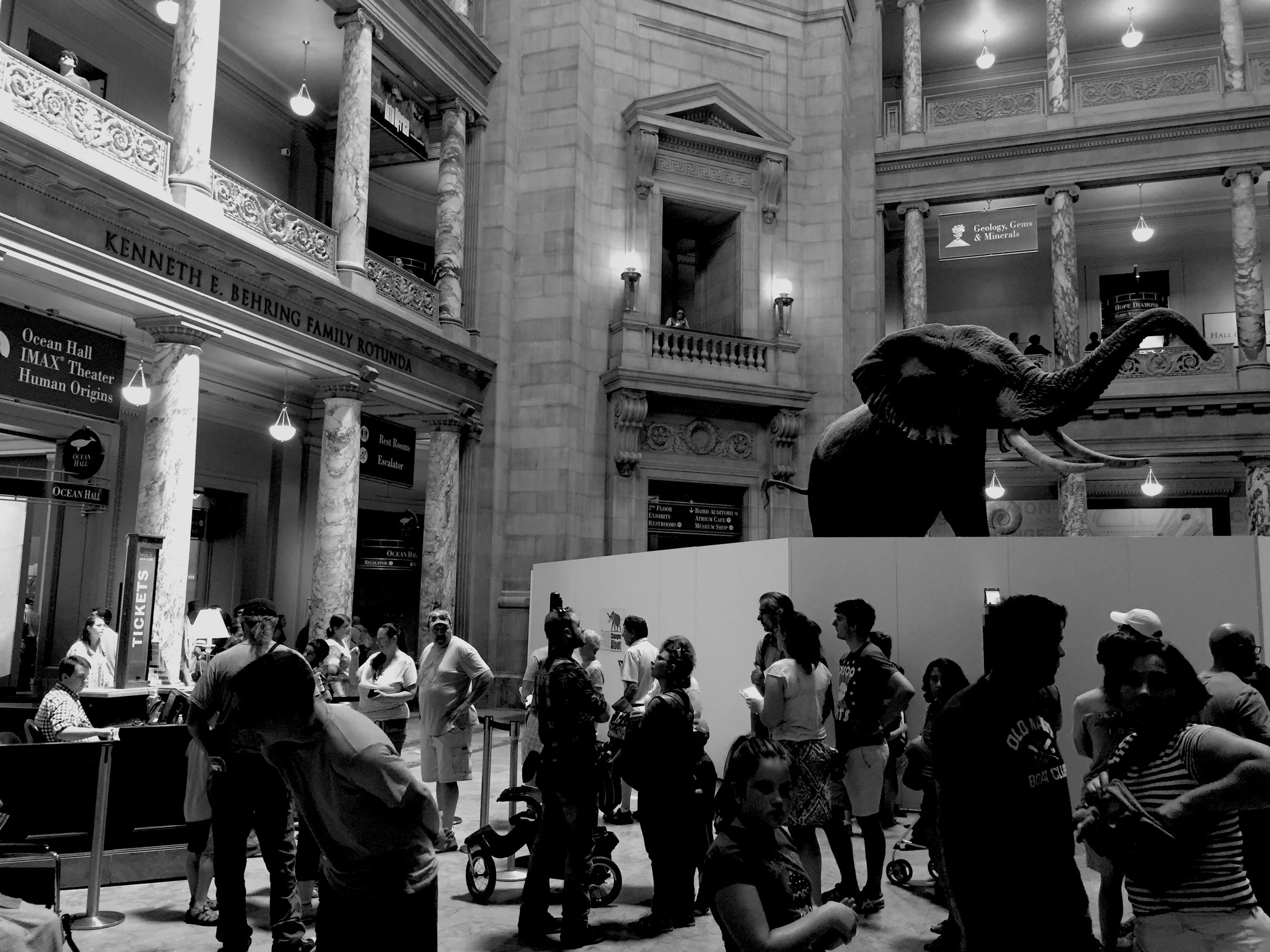The Scale
Being the most visited museum in the U.S., with 3.8M visitors as of July 2015 and on page to beat the 7.3M in 2014, the Natural History Museum is under incredible pressure to leave visitors with a lasting and positive experience. The staggering amount of visitors, both domestic and international, makes it impossible for the staff to satisfy all visitor needs. It’s paramount with the constant growth that the museum provides a 21st century solution to this ever present problem.
Launch Screen & On Boarding Screen
The Research
Our first order of business was to go to the museum and see for ourselves what the main issues were. Conducting ethnographic research and understanding the main pain points for our users, we were able to focus our attention on 5 key obstacles:
With navigation being such a big problem, I conducted my competitive analysis with a focus on the navigation provisions and capabilities of current museum applications. By analyzing what did/didn’t worked and what was/wasn’t expected from users, I could ensure our designs from the beginning stayed true to our mission statement.
I found that most of the current museum apps were not providing a complement to the museum experience. They were filled with mostly half-baked designs and ideas that were out of date and/or inefficient. Most of the apps didn’t have any reviews, even on older versions, which made me believe these apps aren’t promoted very well in the museum. The Natural History Museum of New York has built in navigation using bluetooth within the museum but users reported the navigation as either inaccurate or not working. This lead me to research a Wi-Fi based solution for navigating the museum with it’s main benefits being:
- Cost Effective
- Accuracy
- Easily Fits Current Museum Architechture
- User Expectations of Wi-Fi in Public Spaces
The Prototype
I built the prototype using Axure with a focus on making the functionality of the map paramount. By connecting to the museum Wi-Fi, users would be able to see heat maps of crowd locations throughout allowing them to avoid the madness or see what the fuss is all about. This also allowed the museum to track visitor movements throughout the museum and better adjust to changing interests and behaviors of their user base.







